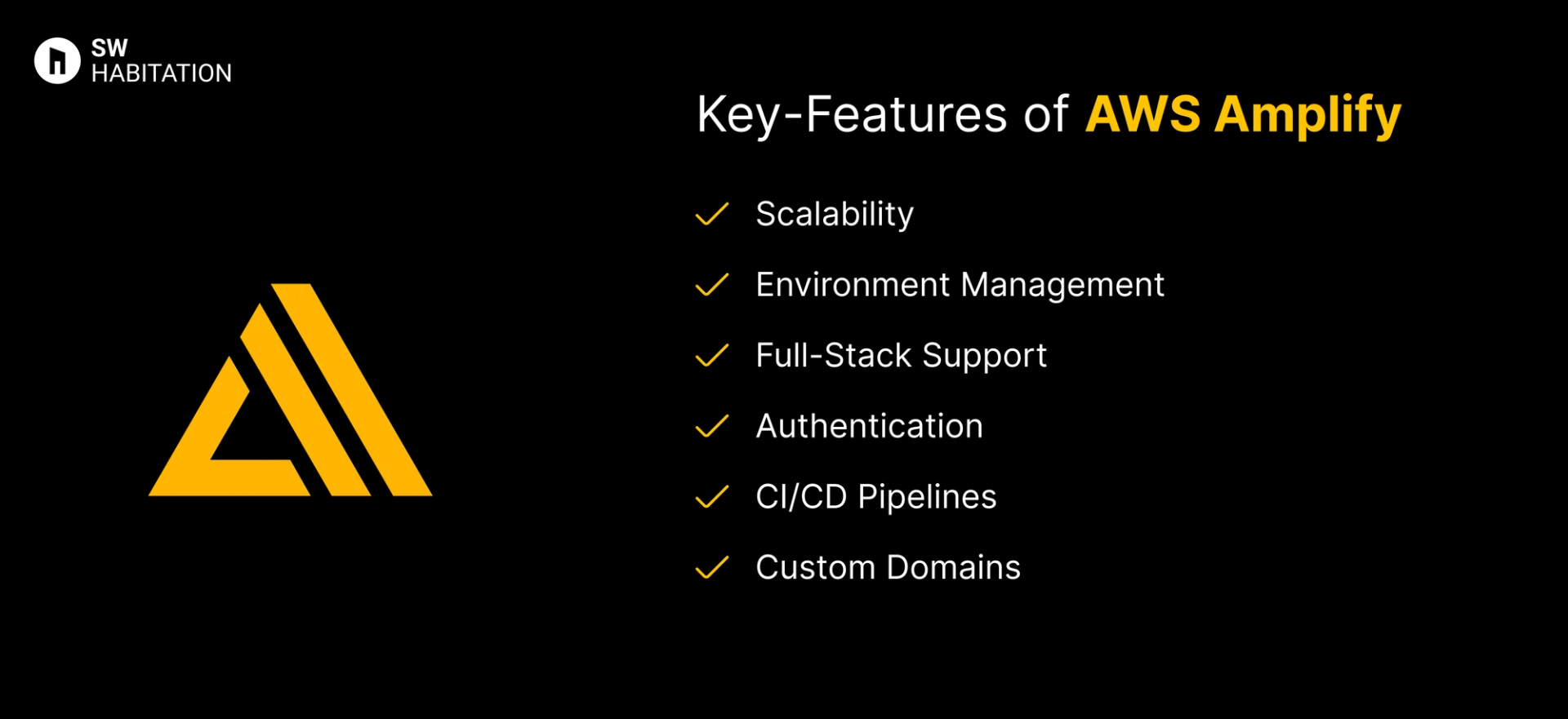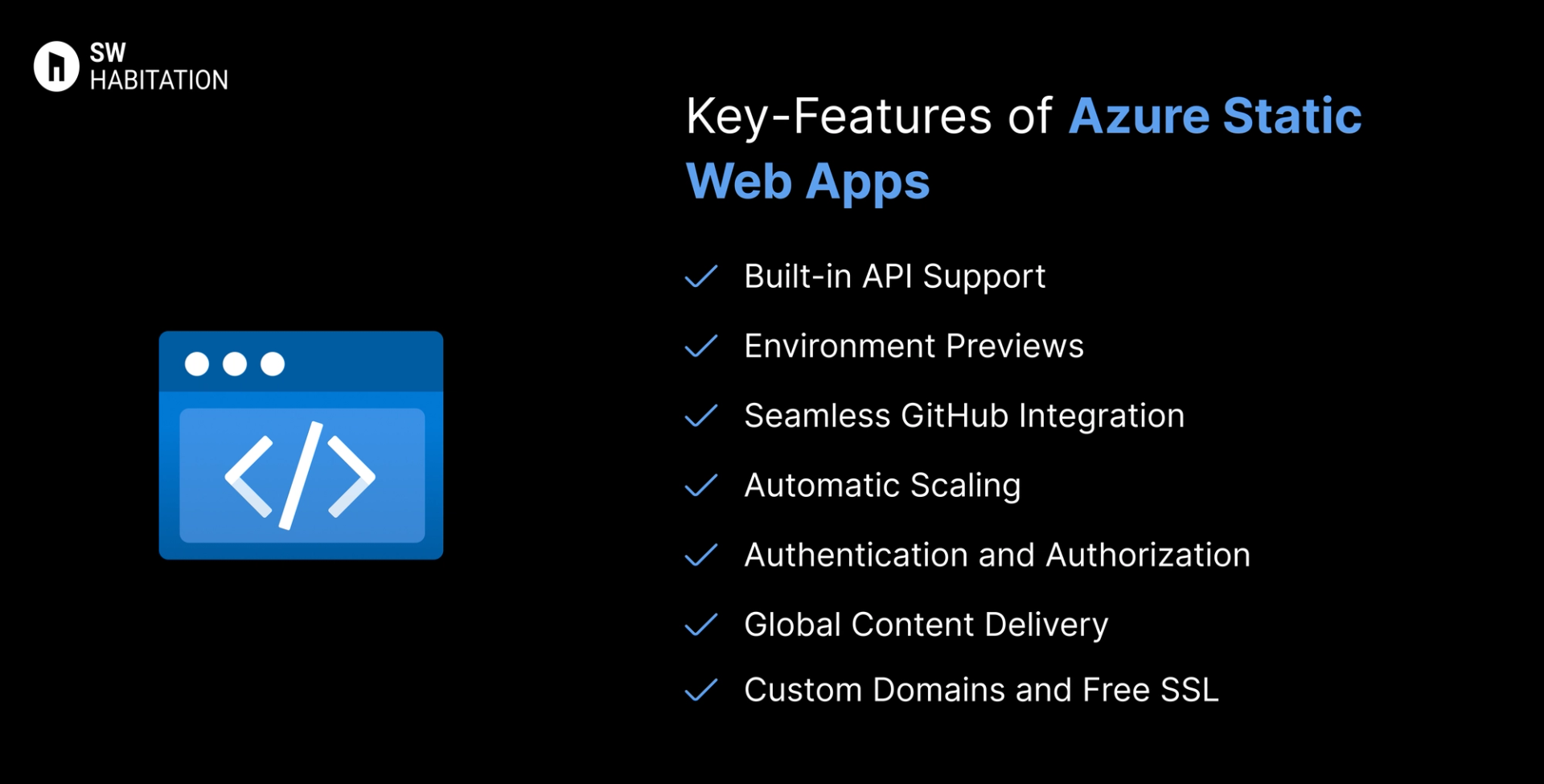AWS Amplify vs. Azure Static Web Apps

AWS Amplify

Azure Static Web Apps
You know when you’ve finished building your website and just want to get it online without dealing with all the techy stuff? That’s where deployment platforms help. They make it super easy to put your site live, just connect your code, click a button, and it’s up and running. No need to worry about servers or complicated setups.
They also take care of the important things like speed, security, and updates in the background. So while they handle the heavy stuff, you can focus on making your website look good and work great. It's simple, right?
What is AWS Amplify?
AWS Amplify is a deployment platform by Amazon Web Services that simplifies building and hosting full-stack applications. It provides tools to connect frontends to backends, manage app hosting, and scale effortlessly. Whether you’re working with static sites, dynamic apps, or serverless functions, Amplify has your back.
Key Features of AWS Amplify


- Scalability: Automatically scales with traffic, no manual intervention needed.
- Environment Management: Create separate environments for dev, staging, and production.
- Full-Stack Support: Deploy frontend and backend from a single platform.
- Authentication: Easy integration with Amazon Cognito for user management.
- CI/CD Pipelines: Automatic builds and deployments with every code push.
- Custom Domains: Connect your own domain with SSL certificates included.
Advantages of AWS Amplify
- Custom Domains and SSL: Free SSL and easy domain setup.
- Great for Serverless Apps: Perfect for serverless architectures.
- All-in-One Solution: Handles frontend, backend, and deployment seamlessly.
- CI/CD Out of the Box: Push code, and Amplify automatically builds and deploys.
- Integrated with AWS: Leverage the full power of AWS services like Lambda, S3, and DynamoDB.
Disadvantages of AWS Amplify
- Vendor Lock-In: Deep integration with AWS means it’s harder to migrate to other platforms later.
- Learning Curve: Familiarity with AWS services is helpful but can be overwhelming for beginners.
- Cost Complexity: Pricing can get confusing as your app scales and uses more AWS services.
What is Azure Static Web Apps?
Azure Static Web Apps is a deployment platform by Microsoft Azure that focuses on delivering static sites and frontend applications. It automatically builds and deploys your app straight from your GitHub or Azure DevOps repository, making the whole process smooth and fast. Plus, it comes with built-in support for APIs using Azure Functions, making it great for modern, serverless architectures.
Key Features of Azure Static Web Apps


- Built-in API Support: Integrate backend functionality using Azure Functions.
- Environment Previews: Preview changes from pull requests before merging them into production.
- Seamless GitHub Integration: Automatically builds and deploys your app on every push.
- Automatic Scaling: No need to worry about infrastructure — Azure handles scaling for you.
- Authentication and Authorization: Supports authentication via providers like GitHub, Twitter, and Azure AD.
- Global Content Delivery: Content is distributed across a global CDN for lightning-fast load times.
- Custom Domains and Free SSL: Easily add your custom domain with free SSL certificates.
Advantages of Azure Static Web Apps
- Free SSL and Custom Domains: No hassle with certificates; it’s all managed for you.
- Authentication Options: Supports third-party authentication like GitHub, Twitter, and Azure AD out of the box.
- Environment Previews: Test changes in preview environments before pushing to production.
- Easy Deployment: GitHub integration means every push automatically triggers a build and deploy.
- Backend Support: Built-in API support with Azure Functions makes adding server-side logic simple.
- Global Reach: Content is served through Azure’s global CDN, ensuring fast delivery worldwide.
Disadvantages of Azure Static Web Apps
- Less Popular Than Competitors: Compared to Vercel or Netlify, it’s not as widely adopted in the frontend community.
- Pricing Uncertainty: While there’s a free tier, costs can creep up as you scale and add features.
- Limited Backend Options: It’s great for static frontends, but backend support is limited to Azure Functions.
- Azure Learning Curve: Familiarity with Azure can make things smoother, but beginners might feel overwhelmed.
- Platform Lock-In: Like most cloud services, migrating away can be tricky once you’re fully integrated.
Comparison Between AWS Amplify vs Azure Static Web Apps
Use Cases of AWS Amplify
- Enterprise Apps: Ideal for large-scale applications needing robust infrastructure.
- Rapid Prototyping: Quickly spin up apps with authentication, storage, and APIs.
- Full-Stack Applications: Manage both frontend and backend in one place.
- Serverless Applications: Leverage AWS Lambda and API Gateway.
Use Cases of Azure Static Web Apps
- Enterprise Solutions: Leverage Microsoft Azure’s reliability and security.
- Serverless Architectures: Integrates naturally with Azure Functions for backend logic.
- JAMstack Applications: Perfect for static sites with dynamic content powered by APIs.
- Continuous Deployment: Automate builds and deployments directly from your GitHub repository.
Other Resources
Conclusion
Deployment platforms are a total game changer if you’re looking to launch your website quickly, reliably, and without any trouble. Whether it’s a personal portfolio, a startup site, or a growing business platform, they handle the technical heavy lifting like hosting, security, and scalability so you can stay focused on building great experiences for your users.
You’re not boxed into a single approach. Most platforms integrate smoothly with the tools and frameworks you already love, letting you deploy directly from your Git repository, preview updates, and roll back with ease. With lightning-fast performance and dependable uptime, deployment platforms simplify the path from code to production. Pick the one that aligns with your workflow, and you’re all set to launch with confidence 🚀
Frequently asked questions
Is AWS Amplify free?
It has a free tier, which is great for testing and small apps. Paid usage kicks in based on bandwidth, storage, and build time.
Is AWS Amplify good for static sites?
Amplify is great for static sites and JAMstack apps, and it includes global CDN hosting, caching, and atomic deployments.
Does AWS Amplify support CI/CD?
Yes, Amplify has built-in CI/CD, just connect your Git repo (GitHub, GitLab, Bitbucket), and it auto-deploys on every push.
What can I build with AWS Amplify?
You can build and deploy full-stack apps with frontends (React, Vue, Angular, etc.) and backends (APIs, databases, authentication) using AWS services.
Is Azure Static Web Apps free to use?
There’s a generous free tier, including custom domains, SSL, and 100,000 monthly requests—ideal for personal projects and MVPs.
How does deployment work with Azure Static Web Apps?
Connect your GitHub repo, and it auto-deploys on push. Azure sets up your build pipeline + staging + production environments automatically.
Does Azure Static Web Apps include backend support?
Yes, You can run Azure Functions as serverless APIs right alongside your frontend—no separate backend hosting needed.
What frameworks work with Azure Static Web Apps?
It supports React, Vue, Angular, Blazor, Next.js, and more. It’s optimized for modern frontend frameworks and static site generators.
